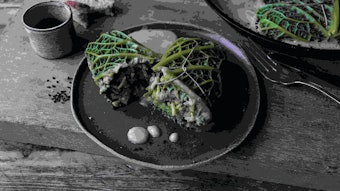“In chemistry you can do [almost] anything, as long as someone is willing to pay for it,” says David Rowe, technical director of Riverside Aromatics Ltd., highlighting the potential and challenges in expanding the natural aroma chemical palette. Ingredient producers are able to isolate and extract ever smaller percentages of material from sources; the question is whether it is always economically viable to do so.
To take a simplistic example, Rowe notes that in theory one could isolate 2-methyl-3-furanthiol (FEMA# 3188, CAS# 28588-74-1, F-1), which is a powerful material with a roast beef odor, from meat. Yet, he says, the derivation of the material from a meat source would lead to a material more costly than its source, making it hugely and prohibitively expensive for flavor applications. When it comes to naturals, he says, “It’s about identifying a more viable source.”
In another example, cis-3-hexenol (FEMA# 2563, CAS# 928-96-1, F-2), which has been found in everything from apples to carnations to fresh cut grass, the chemical could theoretically be produced by harvesting enormous amounts of grass and distilling it. More realistically, the natural version has been derived as a component of mint oil, effectively making it a byproduct of a material that is already commercially viable as an essential oil or a derivative source for natural menthol.










